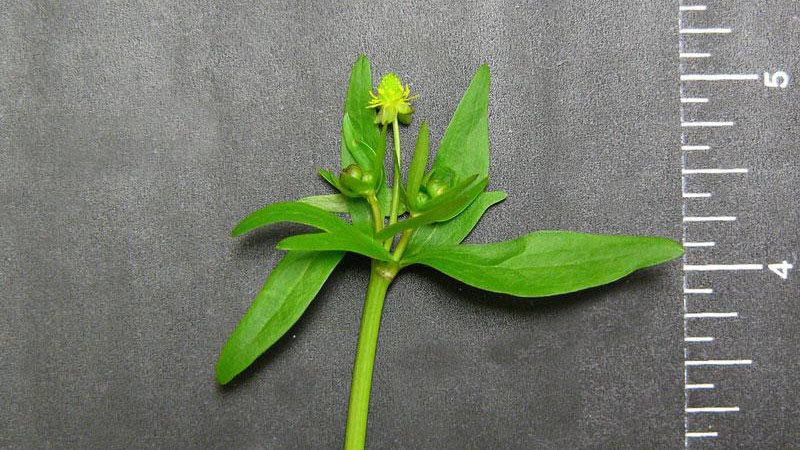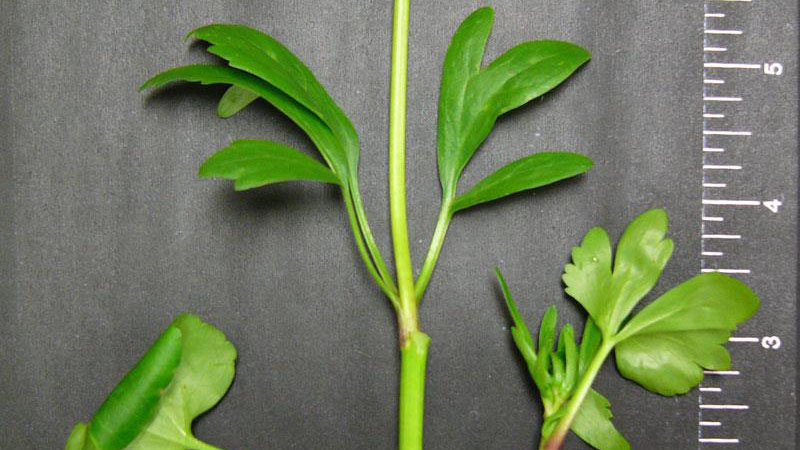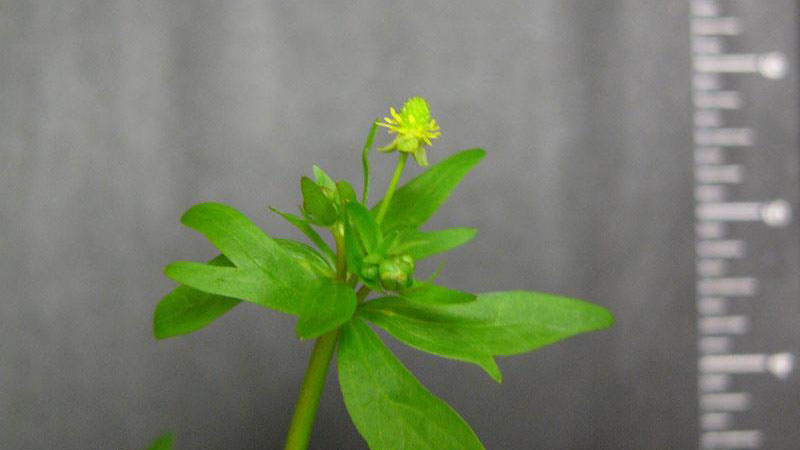Description
Smallflower buttercup (Ranunculus abortivus) may resemble a wild violet in its early growth, but later in the life cycle it produces upright stems that are slender and branch from the base of the plant. Lower leaves are dark green and rounded, while upper leaves are a brighter green and elongate with occasional lobes. Flowers, which appear from April to August, are tiny and yellow with five petals. The plant can grow to heights of 6 - 24 inches. Smallflower buttercup reproduces by seed. This weed grows in both dry and moist environments and is commonly found in fields, waste areas, and wooded habitats. It can be distinguished from hairy buttercup by the lack of hairs on its leaves. In addition, hairy and bulbous buttercup have lobed leaves, whereas most of the lower leaves of smallflower buttercup are unlobed.
Cultural Control
Perennial broadleaf turf weeds are capable of living more than two years. They thrive in weak, thin turf; golf fairways and roughs; home lawns; playfields; and industrial grounds. Proper turf maintenance is the key to control of this weed. First, select adapted turfgrass cultivars for your area and then properly fertilize, mow, and water to encourage dense growth.
Species Data
- GROWTH SEASON / LIFE CYCLE
- winter annual or biennial or perennial weed
- GROWTH HABIT
- upright
Figure 1
- upright
- LEAFLET NUMBER
- one
- LEAF MARGIN
- most of the lower leaves exhibit crinkled leaf margins, while upper leaves tend to have smooth margins
Figure 2
- most of the lower leaves exhibit crinkled leaf margins, while upper leaves tend to have smooth margins
- LEAF HAIRS
- most of the lower leaves are heart-shaped and unlobed, whereas the upper leaves tend to be elongated and occasionally lobed
- LEAF VENATION
- pinnate
- LEAF ARRANGEMENT
- ROOT TYPE
- fibrous
- FLOWER COLOR
- yellow
Figure 6
- yellow
Publication date: Nov. 15, 2017
Recommendations for the use of agricultural chemicals are included in this publication as a convenience to the reader. The use of brand names and any mention or listing of commercial products or services in this publication does not imply endorsement by NC State University or N.C. A&T State University nor discrimination against similar products or services not mentioned. Individuals who use agricultural chemicals are responsible for ensuring that the intended use complies with current regulations and conforms to the product label. Be sure to obtain current information about usage regulations and examine a current product label before applying any chemical. For assistance, contact your local N.C. Cooperative Extension county center.
N.C. Cooperative Extension prohibits discrimination and harassment regardless of age, color, disability, family and marital status, gender identity, national origin, political beliefs, race, religion, sex (including pregnancy), sexual orientation and veteran status.





